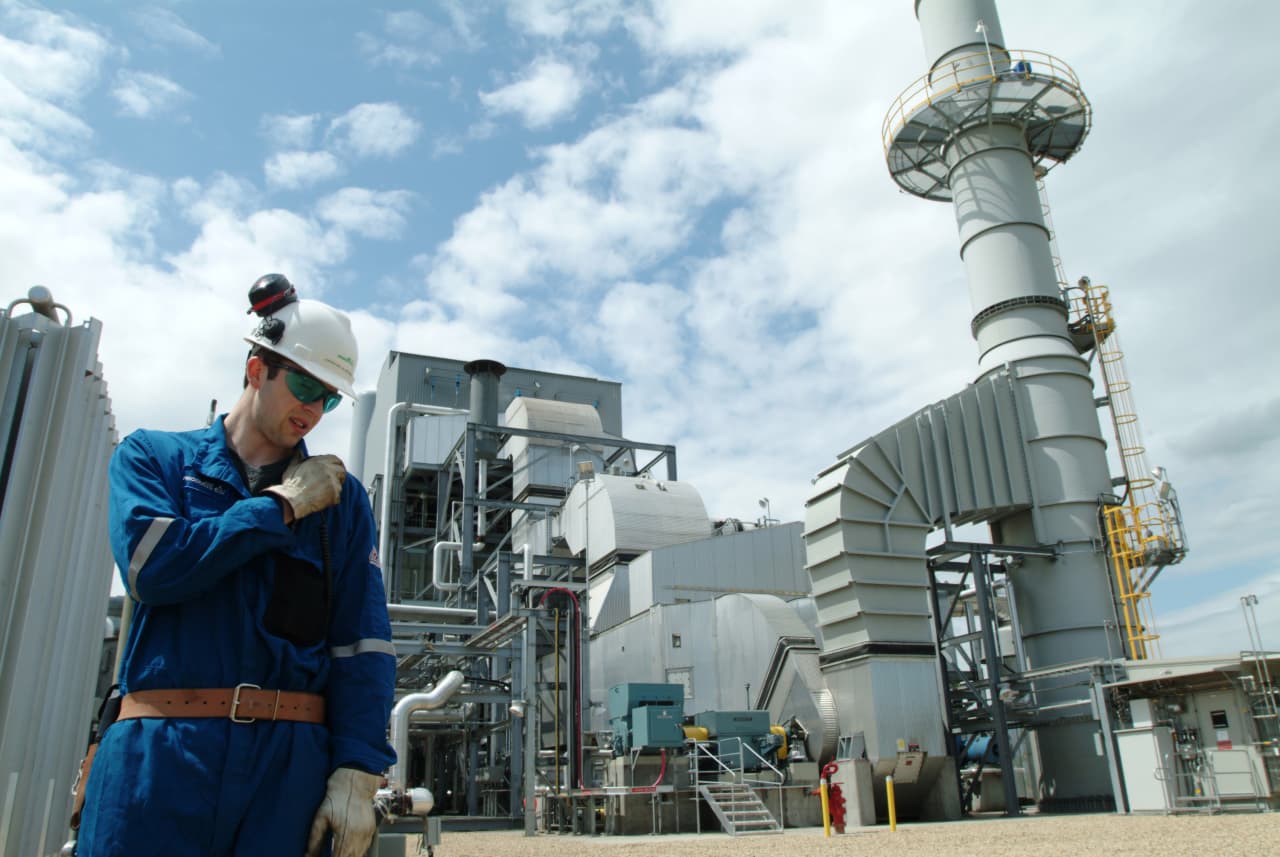Investors Have Cooled on Hydrogen. A Second Wave Is Coming.
Investors may want to give hydrogen a second look, but they’ll need to be patient.
There’s not a lot of love for the fuel on Wall Street. The Global X Hydrogen ETF is down 81% from its high in 2021, and other hydrogen stocks are well below their peaks.
Skeptics say the cleanest hydrogen is too pricey and still far away from becoming part of a viable marketplace. The government is still sorting out regulation and industry incentives. New infrastructure will be required, and it isn’t clear there will be enough customers once it’s built.
But even as investor enthusiasm faded, a raft of companies have been quietly exploring hydrogen as a clean-burning fuel that can be a building block in the energy transition. There are numerous corporate projects in development that could help propel the growth of a hydrogen economy and drive profits in the future. The Department of Energy is investing $8 billion in promoting clean hydrogen, with the creation of seven hydrogen hubs around the U.S. within the decade.
Many energy and petrochemical companies are studying or have hydrogen projects in the works as a way to decarbonise. One reason is that hydrogen is used in the refining process, and cleaner hydrogen could be used in industrial processes. Hydrogen can be turned into ammonia and is used in fertiliser. In its next wave, hydrogen could be widely used in industrial applications like steel making and for fuel in ships and aircraft.
Supporters believe all the money pouring in now will help bring costs down as hydrogen projects scale. Investors may want to look at traditional energy and industrial companies that are currently working on hydrogen projects as a way to play the long-term growth of a hydrogen market.
“All these companies…have decarbonisation aspirations,” said Marc Bianchi, managing director at TD Cowen. There’s a meaningful opportunity for companies that are already using thousands of tons of hydrogen a day to switch from dirtier to cleaner sources.
The U.S. uses about 10 million tons of hydrogen a year for applications such as refining and fertiliser. Hydrogen demand was about 2% of global energy consumption in 2020 and could grow to 20% to 30% in a net-zero economy, according to S&P Global Commodity Insights.
Hydrogen gas is colourless, but industry shorthand assigns colours based on how the fuel is produced. Green hydrogen is the most desirable. Electricity generated from solar or wind is used to split hydrogen from water molecules and produces no carbon byproducts. Blue hydrogen is made by using natural gas along with capture and storage technologies to limit CO2. Gray hydrogen is made with natural gas or methane and generates carbon dioxide.
S&P Global Commodity Insights projects the cleanest hydrogen, even with incentives, would be about three times more costly in parts of the country where renewable energy is more expensive, like the Northeast. In the best case, green hydrogen produced in Texas, using proposed tax incentives and credits, could be as low as $1 per kilogram, slightly less than the $1.3 per kilogram cost of gray hydrogen. In Europe, green hydrogen is $6 to $9 per kilogram.
The energy industry, however, is waiting to see the final structure of U.S. tax credits granted to clean hydrogen under the Inflation Reduction Act. The Internal Revenue Service issued a draft guidance on implementation.
It was viewed as too restrictive by many in the industry, and some industry executives say it put a chill on activity while they wait to see how deep incentives will be for their proposed processes. The comment period has just ended.
“Anyone in power generation wants to talk about hydrogen,” said Richard Voorberg, president of North America for Siemens Energy . “Now, we’ve seen that plateau over the last little while, meaning months. Everyone was excited about [the Inflation Reduction Act], but the guidance that came out Dec. 22 had people scratching their heads.”
Ernest Moniz, a former energy secretary, heads the consortium formed to organise a market for clean hydrogen, called the Hydrogen Demand Initiative. Moniz said recently that the guidance presented by the IRS was too narrow and could slow the industry’s growth if not changed.
“The philosophy has been to require upfront decarbonisation of the electrons that you’re supposed to be using for the electrolysis of water, and the fear—and I certainly fear it—is this will significantly inhibit the near-term demand creation,” Moniz said. “We might end up with a very low carbon grid, but a hydrogen market that’s way behind where it should be at that time.” He added that he’s watching for how the IRS adjusts its plans for the tax credits.
Investors looking at companies with hydrogen projects need to be sure the value is there for the company’s traditional businesses. Analysts say valuations don’t appear to reflect potential for hydrogen, even if some had in the past.
Hydrogen was once the “shiniest new toy” for investors, but disillusionment has set in, said Timm Schneider, CEO of Schneider Capital Group. “Not one investor has asked me about hydrogen at any company, like Chevron or Exxon, that has a hydrogen project, over the past 12 months,” he said.
One way to invest in the transition is through industrial gas companies. S&P Global is projecting that Air Products and Chemicals will be the leading industrial gas producer of hydrogen, in the amount of 5.2 million metric tons by 2030. Exxon Mobil is positioned to be the largest producer among oil-and-gas companies, with 1.5 MMT, S&P Global said.
Air Products CEO Seifi Ghasemi, speaking at the CERAWeek by S&P Global conference last month, said his company is currently the largest producer of grey hydrogen globally. He wants to be the leader in green and blue. The company began producing grey hydrogen at the request of the U.S. government in the 1950s for use in the space program.
Ghasemi said the company has two major projects in development. One is in northern Saudi Arabia, where the company will use wind and solar with its partners to create 650 tons of hydrogen a day. That project, he said, IS “30 times bigger than anything that exists today.”
Air Products has been collaborating with Baker Hughes , an energy services and technology company that has developed turbines and compressors. Baker is working on the hydrogen project in Saudi Arabia and the two have another project under way in Alberta, Canada that is expected to be operational next year. “Baker Hughes is interesting. It is supplying a turbine to that project in Alberta that’s going to run on 100% hydrogen. That’s been a bit of a challenge for the industry, to burn hydrogen in a turbine,” said Bianchi. Baker Hughes, he said, was the first to succeed.
The demand for hydrogen is still uncertain and the market is nascent. The anticipated supply of hydrogen is well ahead of demand, Enverus Intelligence Research said in a report last week. Only 30% of the U.S. projects expected by 2030 have disclosed customers.
But there was a bright note in the Enverus report. European Union decarbonisation targets could mean U.S. producers could find a significant export market.
Exports are what helped turn the U.S. into the leading producer of oil and gas. The energy industry might follow that playbook again with hydrogen.
 Copyright 2020, Dow Jones & Company, Inc. All Rights Reserved Worldwide. LEARN MORE
Copyright 2020, Dow Jones & Company, Inc. All Rights Reserved Worldwide. LEARN MORE
This stylish family home combines a classic palette and finishes with a flexible floorplan
Just 55 minutes from Sydney, make this your creative getaway located in the majestic Hawkesbury region.
Continued stagflation and cost of living pressures are causing couples to think twice about starting a family, new data has revealed, with long term impacts expected
Australia is in the midst of a ‘baby recession’ with preliminary estimates showing the number of births in 2023 fell by more than four percent to the lowest level since 2006, according to KPMG. The consultancy firm says this reflects the impact of cost-of-living pressures on the feasibility of younger Australians starting a family.
KPMG estimates that 289,100 babies were born in 2023. This compares to 300,684 babies in 2022 and 309,996 in 2021, according to the Australian Bureau of Statistics (ABS). KPMG urban economist Terry Rawnsley said weak economic growth often leads to a reduced number of births. In 2023, ABS data shows gross domestic product (GDP) fell to 1.5 percent. Despite the population growing by 2.5 percent in 2023, GDP on a per capita basis went into negative territory, down one percent over the 12 months.
“Birth rates provide insight into long-term population growth as well as the current confidence of Australian families,” said Mr Rawnsley. “We haven’t seen such a sharp drop in births in Australia since the period of economic stagflation in the 1970s, which coincided with the initial widespread adoption of the contraceptive pill.”
Mr Rawnsley said many Australian couples delayed starting a family while the pandemic played out in 2020. The number of births fell from 305,832 in 2019 to 294,369 in 2020. Then in 2021, strong employment and vast amounts of stimulus money, along with high household savings due to lockdowns, gave couples better financial means to have a baby. This led to a rebound in births.
However, the re-opening of the global economy in 2022 led to soaring inflation. By the start of 2023, the Australian consumer price index (CPI) had risen to its highest level since 1990 at 7.8 percent per annum. By that stage, the Reserve Bank had already commenced an aggressive rate-hiking strategy to fight inflation and had raised the cash rate every month between May and December 2022.
Five more rate hikes during 2023 put further pressure on couples with mortgages and put the brakes on family formation. “This combination of the pandemic and rapid economic changes explains the spike and subsequent sharp decline in birth rates we have observed over the past four years,” Mr Rawnsley said.
The impact of high costs of living on couples’ decision to have a baby is highlighted in births data for the capital cities. KPMG estimates there were 60,860 births in Sydney in 2023, down 8.6 percent from 2019. There were 56,270 births in Melbourne, down 7.3 percent. In Perth, there were 25,020 births, down 6 percent, while in Brisbane there were 30,250 births, down 4.3 percent. Canberra was the only capital city where there was no fall in the number of births in 2023 compared to 2019.
“CPI growth in Canberra has been slightly subdued compared to that in other major cities, and the economic outlook has remained strong,” Mr Rawnsley said. “This means families have not been hurting as much as those in other capital cities, and in turn, we’ve seen a stabilisation of births in the ACT.”
This stylish family home combines a classic palette and finishes with a flexible floorplan
Just 55 minutes from Sydney, make this your creative getaway located in the majestic Hawkesbury region.






















